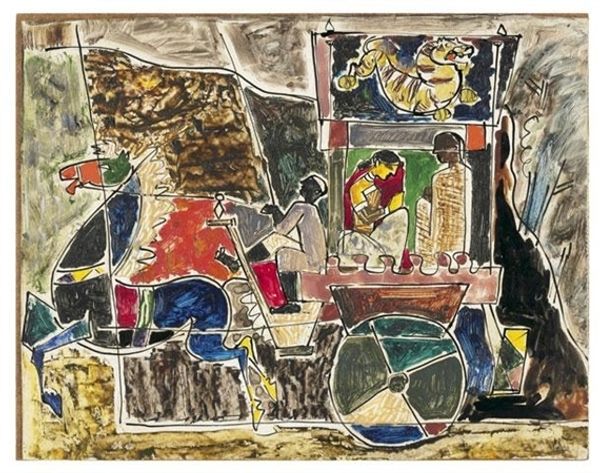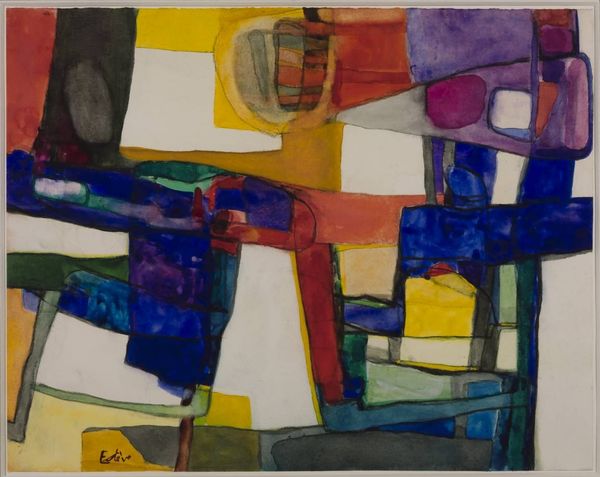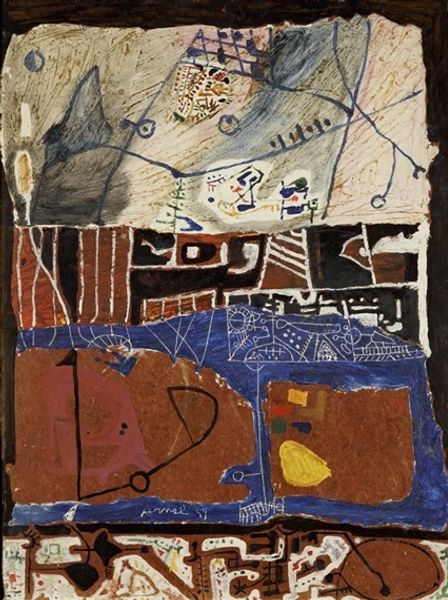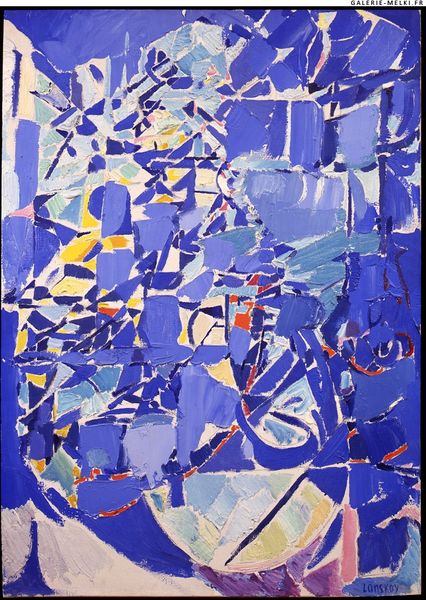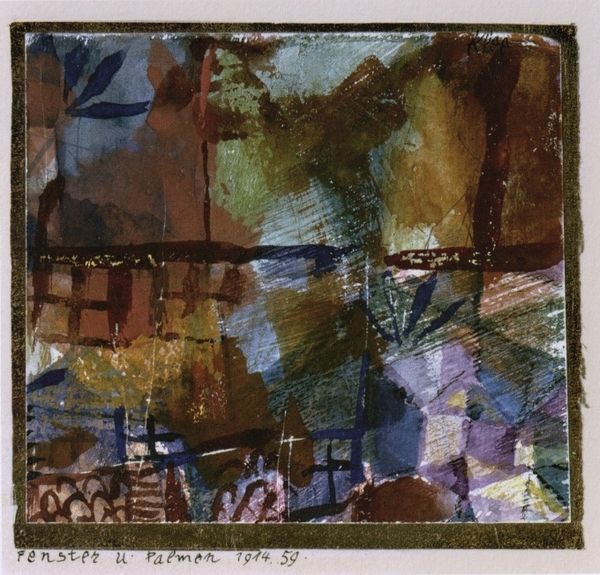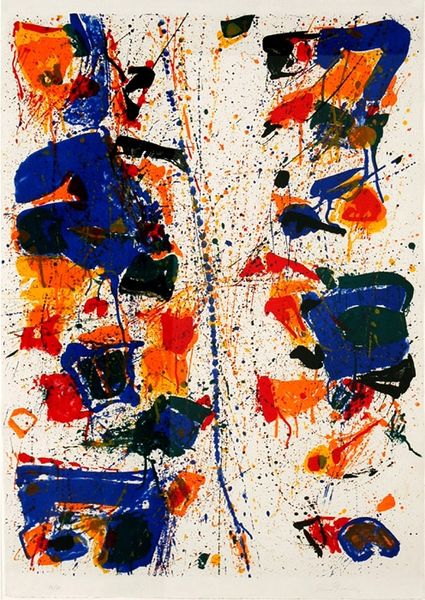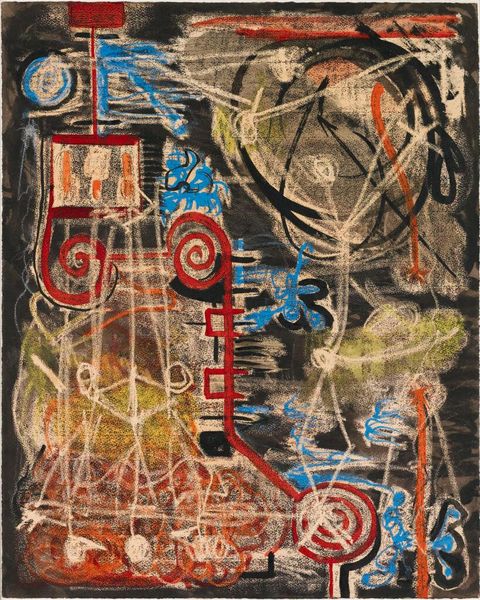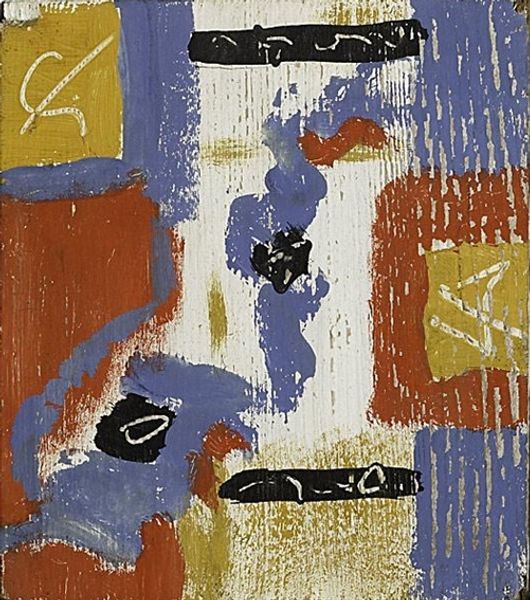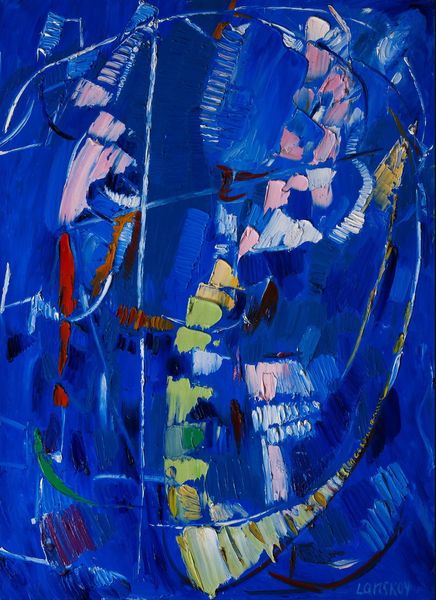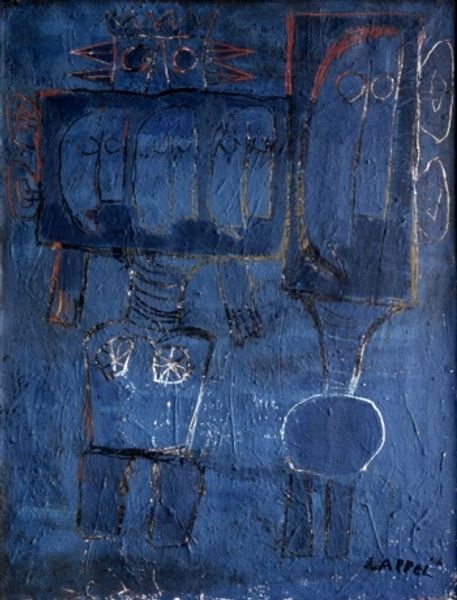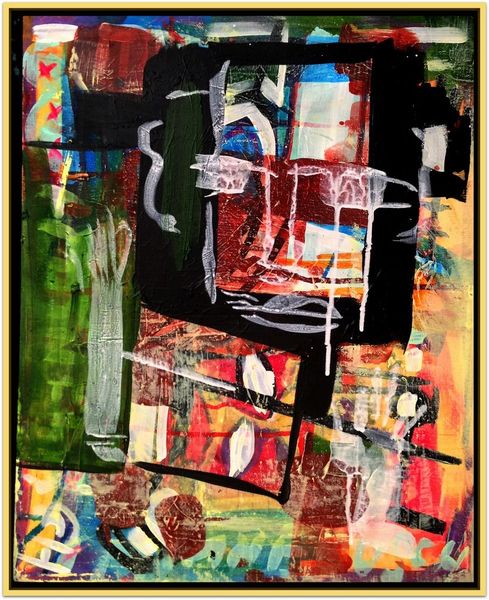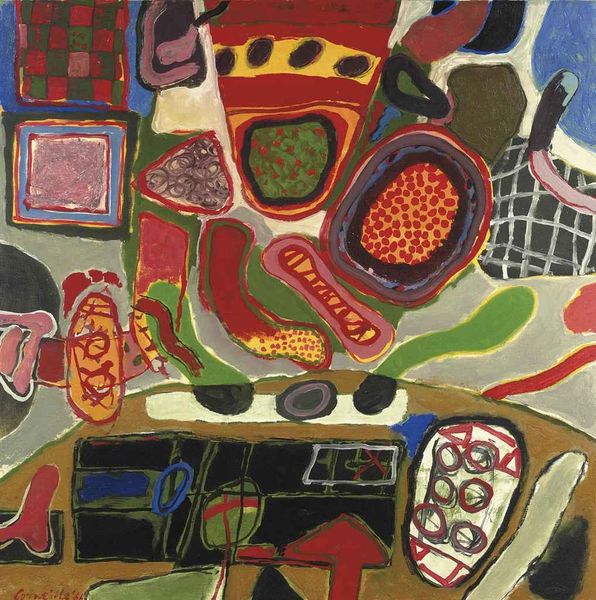
Dimensions: 195 x 130 cm
Copyright: Manuel Cargaleiro,Fair Use
Curator: Well, hello! Isn't this a delightful visual garden we've stumbled upon? It's Manuel Cargaleiro's "Paisagem do meu Jardim" from 1976. A mixed-media painting—mostly acrylic on canvas. What’s your immediate reaction to it? Editor: Fragmented, yet somehow contained. It feels… wistful. Like a memory seen through broken glass. All these distinct geometric patterns held together, but also held apart. What am I supposed to make of it? Curator: Perhaps that feeling of being pulled apart *is* the point? Cargaleiro was deeply influenced by traditional Portuguese tiles, azulejos. Think of them as individual stories forming a larger narrative, each with its own color, its own shape. Editor: Ah, that clicks. It's a fascinating collision of tradition and abstraction, almost like a visual representation of cultural identity being deconstructed and reassembled. I like that there's not a single focal point—my eye darts around, landing on different sections, finding connections, but never quite resolving. What about the heavy reliance on geometric shapes and color blocks? What’s at play there? Curator: I think that through geometry, Cargaleiro strips away the unnecessary, the merely decorative. He reduces elements to their barest forms—triangles, squares, circles—forcing us to engage with the core of visual language. For me, this canvas also offers a sense of playful simplicity, and joy for the raw beauty that he encountered on his travels between Portugal and Paris. Editor: I'd add that this simplicity has political dimensions as well. Given that this piece emerged in the wake of post-colonial reckoning, these vibrant geometries and abstracted shapes serve to question and dismantle traditional forms of representation often entangled in colonial power dynamics. They help rebuild them into something else, which goes beyond beauty itself. Curator: You always manage to dig deeper, revealing complexities I never even considered. Maybe it's about taking those old colonial stones and using them to build something entirely new! Editor: I wouldn’t dare go that far. But on that note, this exercise just taught me about finding new spaces for historical narratives within abstraction and geometric designs.
Comments
No comments
Be the first to comment and join the conversation on the ultimate creative platform.
